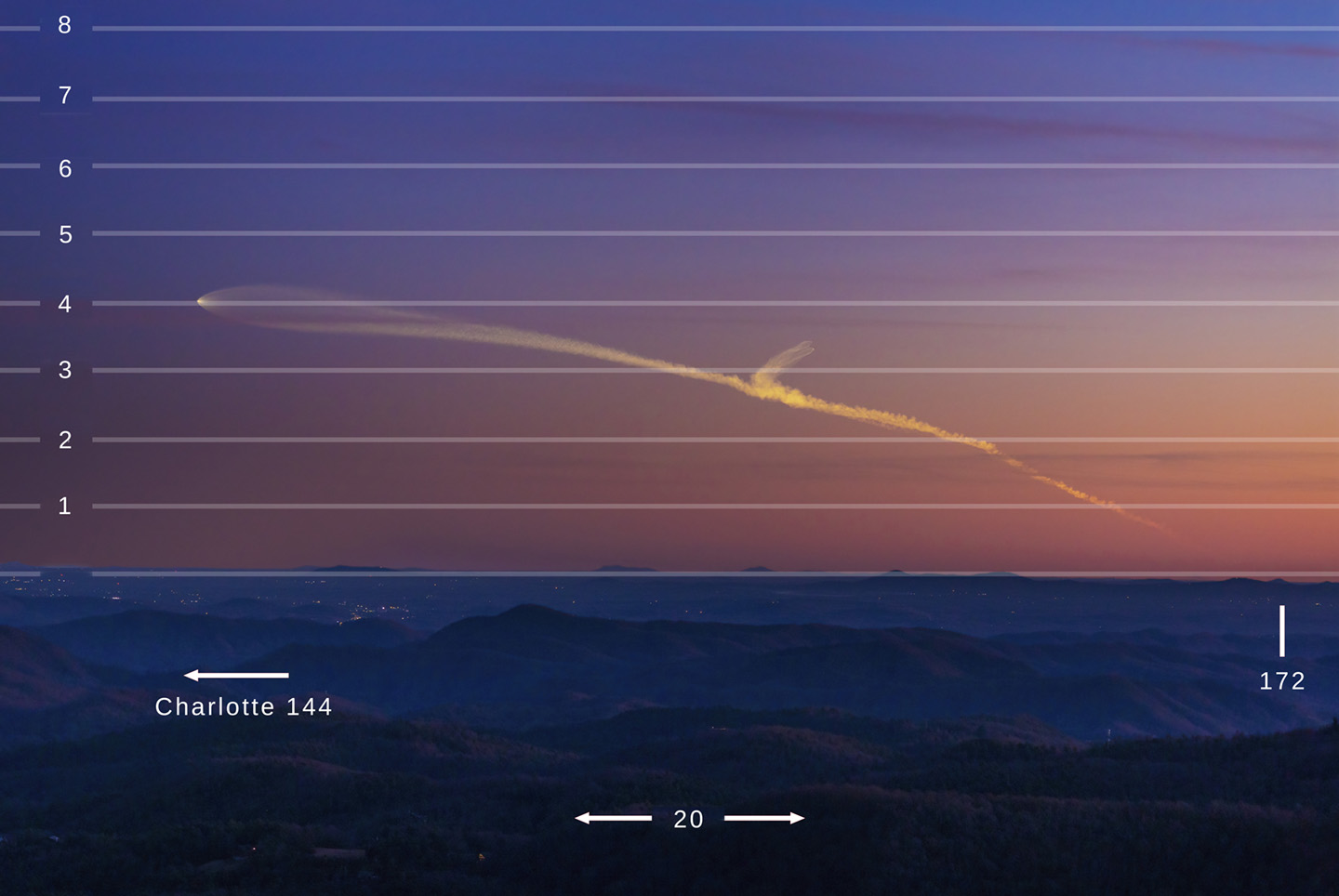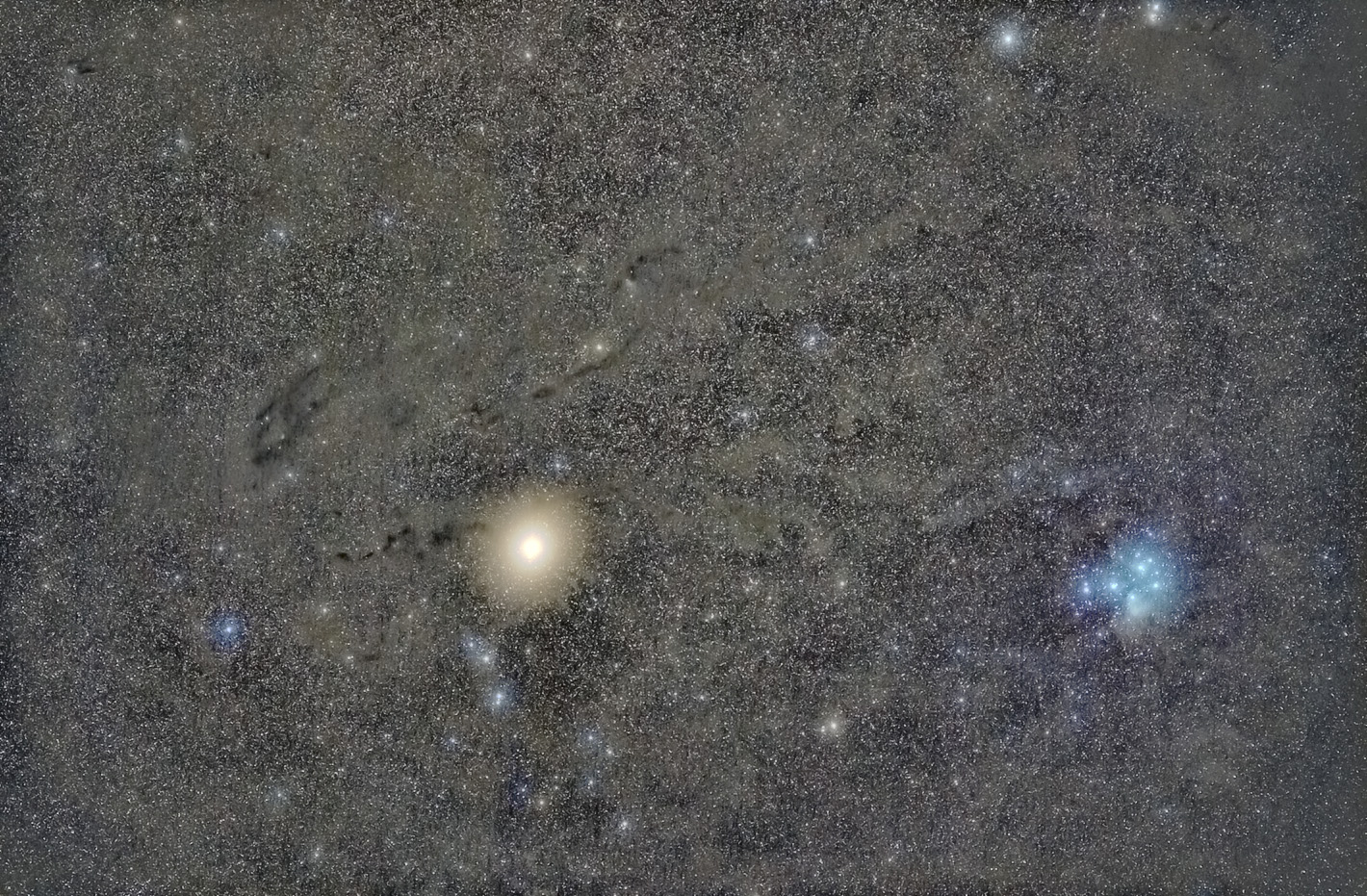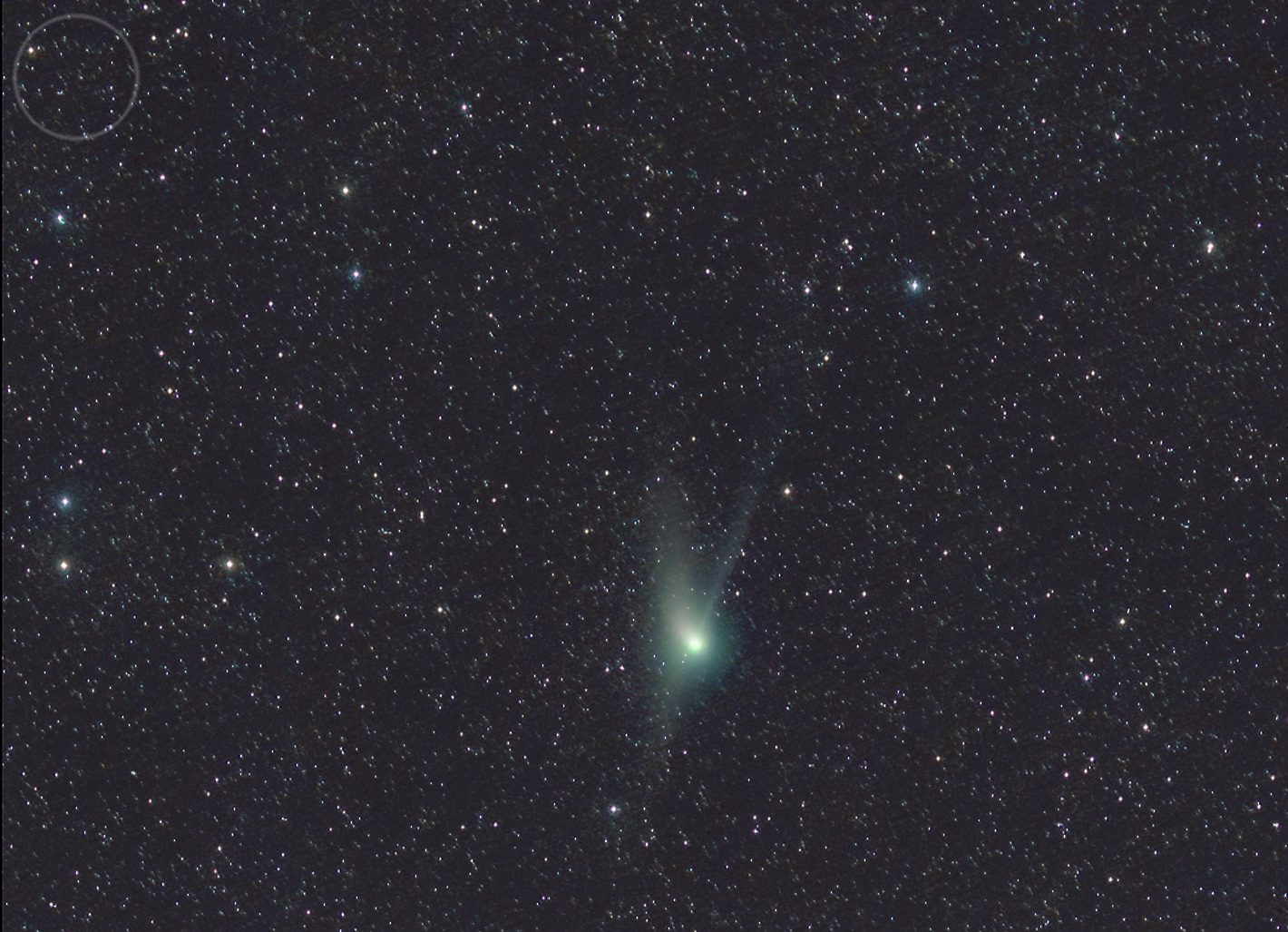The Starry Night, 246 :: home :: |
Rocket notes, Dust, and a Comet
Second, in order to stop figuring out rocket launch trajectories from scratch every time, here's a marked up version of this week's Falcon launch due east. It's the 105mm's field of view, almost exactly 20 degrees wide, annotated with degrees of elevation and with the azimuth at which rockets rise marked:
At least one detail is tightly linked to Thunder Hill: Charlotte's bearing (144 degrees), out of view to the left. Considering that launches to equatorial orbits go due east, never climbing high into the North Carolina sky, it seems plain that I'll need to go to Thunder Hill to photograph them anyway. Trees and terrain extend to four degrees and beyond from most, if not all, the other sites I've considered. Thunder Hill's better-than-nautical horizon is essential for these. Consult the unmolested, 1400-pixel version of this photo on the previous page for horizon features to guide watching for rockets' first gleaming. If you decide to try another site, just look at that graphic and keep in mind that Omega Centauri culminates at about 6 degrees. This is -50 dec territory. There are stars in Reticulum, Doradus, and Carina in that bit of sky. Canopus crosses the meridian somewhere around 1.5 degrees up. Launches to the east are seriously down there. Flights up the east coast are different. See the star charts I posted along with my first rocket launch photos back in 2021 for some notes on those. I'd like to watch a flight up the coastal track from up at the overlook for a direct comparison and composite. When it's warmer.
1/20-21/2023. I traded a night's sleep for two photos. One is of Mars and the Taurus molecular cloud. I wanted 4 hours of exposure, but unpredicted clouds moved in and put an end to that after just 1h17m.
It's more "promising" than spectacular. There's a lot of dust up there, but I'm forcing this data too hard and the result is a bit messy. I can't simply add more exposure because Mars will have moved too much, so I'll try that again Monday or Tuesday night, when the sky is again supposed to be clear and the Moon is not yet bright. The second photo had to wait until about 5 in the morning when comet C/2022 E3 (ZTF) had climbed up out of the murk and above the pines. It's an "astronomer's comet" -- small and not particularly eye-catching. How small? The dim circle in the upper left indicates the apparent size of the Moon at the same scale.
This is the first photo I've seen that suggests it has an anti-tail extending opposite the main tail(s). Oddly enough, the anti-tail seems opposed to the ion tail rather than opposite the dust tail. Explaining *that* is beyond my pay grade. (Tom Polakis reminds me that the anti-tail need not be opposite the dust tail or point directly sunward, depending upon where the Earth is in relation to the plane of the comet's orbit. So, yeah, probably just dust in the comet's orbital plane seen by happenstance to align with the ion tail -- the appearance of a mystery where there really is none.)
1/22/2023. The TMB92SS with its robust focuser is probably right up against the recommended weight limit of the SWSA. It is worth making it work because the only practical alternative is demounting the AT10RC in favor of the TMB and moving the A-P mount whenever I want to use the 92mm refractor anywhere except the back yard. I could also buy yet another (not-quite-so-lightweight) mount which is not going to happen anytime soon. If the TMB can be brought to a sescure balance, then I have an excellent, highly portable rig. I think I'll still favor the light and cheap 500mm Rokinon for the eclipse out of airline concerns. I first mounted the TMB92 using a short Vixen bar, and I think a longer rail is needed to permit balancing in dec. When I went to get the rail I remembered downstairs (probably off the Lunt 60), I saw right beside it a neglected, home-made 1/4-inch Losmandy D plate weighing almost exactly the same. The Losmany D plate seems to work just fine under the TMB on the SWSA, although the entire rig still needs additional RA counterweighting. Several schemes come to mind for that: drill some steel stock (eBay), make a bushing so that my lightest LXD counterweight can be used, add heavy-walled aluminum tube stock to the original counterweight, or attach the lightest LXD counterweight to the original counterweight. I like that last idea tonight but will check in with my engineering avatar tomorrow before whittling metal. [Next day: yessir, that works fine. There are several fiddly bits about all this, some conflicts here and there that need spacers or longer bolts or a shim or whatever, but it's ready for some star trials. Photos to come after it proves out.] The relative ease with which the little mount accommodates the TMB92 suggess that I could use the Lunt 60 on it if were to revert that instrument to its original form until the Sun clears the pines when I can mount the long-focus Frankenscope solar kit piggyback on the AT10RC. For that matter, I wouldn't mind trying the front etalon and the B600 blocking filter on the TMB, but that option has its own challenges. Lots of possibilities just opened up.
:: top ::
|
© 2023, David Cortner


